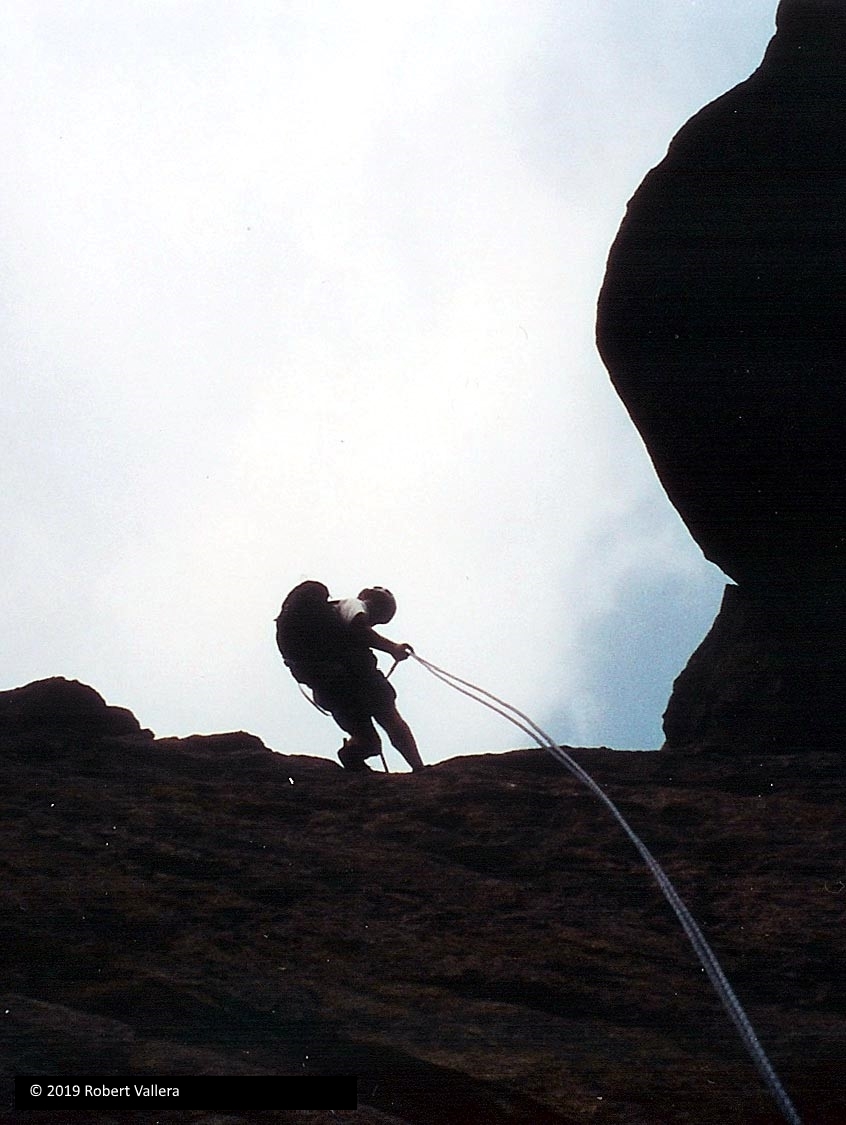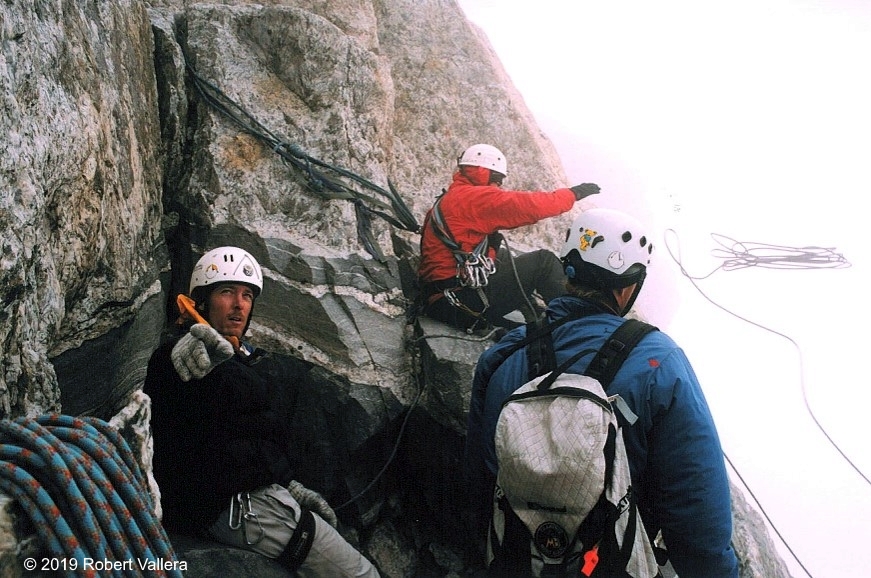Real estate investing is like alpine climbing: you don’t want to be in an exposed position when the conditions hit the fan. In a well-timed, pre-storm descent to safety, my climbing partners (l. to r.) Mike Kummer, Tom Donnelly throwing the rope into a cloud, and Randy O’Connell rig our rappel from a ledge near the summit of Wyoming’s Grand Teton.
By Robert Vallera CCIM
• Contrary to the old adage, location might not be your most critical investment variable.
• While timing is difficult to master, inventory and interest rates are key market indicators.
• Apply market-cycle cognizance to improve profitability and safeguard against losses.
Life’s Most Important Lessons Are Rarely Found In Books
In my early twenties, before I’d even completed my undergraduate degree, I had the good fortune to begin working with Laird Holliday. We would frequently eat lunch together, and in our conversations, Laird would often find a way to challenge my young intellect.
During one of these lunches, Laird made a casual quip that he soon forgot, although I never did. He told me that if the Good Lord ever paid me a visit and offered me one gift, either brains, luck or timing, that as a real estate investor, I should choose … timing.
Laird has a brilliant mind, so his comment puzzled me. “Why not brains?” I asked. His answer must not have resonated with me. I don’t recall how he responded, and now suspect that I was too inexperienced to fully understand his answer. It would be over a decade later, after the real estate crash and RTC debacle of the 1990’s before I really understood why he would choose timing as his most desired gift.
Going Bust At The Best Location In Town

By the late 1980’s, the four corners surrounding the intersection of La Jolla Village Drive and Genesee Avenue in San Diego’s University Town Center neighborhood were rapidly being transformed from a dusty chaparral-covered mesa to the heart of San Diego’s largest employment center. This intersection, now surrounded by high-rises, was on its path to eventually becoming the 100% location within all of San Diego county. Investing in a location like that, what could possibly go wrong?
Even with the benefit of the best location in the region, a number of major properties around that intersection were lost by their owners during the recession of the early 1990’s. Equity Office, led by vulture investor Sam Zell, made out like a bandit in his well-timed acquisition of The Plaza office park on the northeast corner of that intersection. The land now underlying much of the Costa Verde development at the southwest corner of the intersection suffered a similar fate.
Those properties had what are broadly considered the three most important components of a successful real estate investment, location, location, location. However, the prior owners lacked the three vital gifts that Zell brought to the table … timing, timing and timing. Such well-timed distress acquisitions led Zell to develop his nickname, the Grave Dancer.
Developing Good Market Timing
Short of the above-mentioned divine intervention, timing can be a hard skill to develop. This explains why timing was Laird’s preferred gift. So, how does an investor develop a sense of timing?
My own experience has taught me to balance observations within my market niche with observations about the macro economy. Seemingly healthy market niches can face reversals in deep recessions. My favorite micro-indicators include tracking changes in the amount of listed inventory active on the market and the average listing time on market. I consider changes in interest rates to be the most important macro-indicator. From there, the process can become incredibly complex due to the large number of variables that influence the real estate market cycle.
Acknowledgement of that complexity leads us to an important caveat. Because the future is inherently unpredictable, there is no way to both accurately and consistently time the market. On occasion, you might accurately call a market top or bottom. However, excessive concern about market timing can lead to analysis-paralysis. Over the long run, such paralysis can cause a lot of damage by keeping you on the sidelines, limiting the growth of your portfolio. Fortunately, you can be very successful in real estate maneuvering between the 20-yard lines. This is particularly true regarding dispositions in the latter stage of a market-cycle. As an alpinist, I compare it to descending a mountain before a storm. It’s better to sell a year too early than a day too late.
If you learn to master timing, I’ll be happy to enlist you as my next real estate mentor and join you for a weekly lunchtime discussion on your mega-yacht. You’ll be able to tell your personal chef that I like my lobster broiled and prefer a good India pale ale over champagne.


I enjoyed your article, Robert